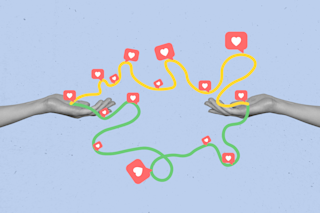Forget reality: In virtual reality, you can be whomever and wherever you want. VR makes the unreal real, using computer software and hardware that responds to our body’s movements to immerse us in a convincing alternate existence.
There’s plenty of space to roam. VR places can be huge. In Second Life, an early pioneer of virtual worlds, you can attend university, own a blimp, have blue fur — whatever. It includes more than 600 square miles of otherworld existence. The worlds of Minecraft, another digital sandbox, could cover Earth eight times over.
The possibilities are endless. VR movies offer new vehicles for narrative structure. VR classrooms may reach students who don’t thrive behind a desk. Soon, we may have virtual meetings, conferences, classes and parties. According to tech entrepreneur Philip Rosedale, who founded Second Life, “We have an insatiable appetite for communicating with each other. VR is the next medium ...















